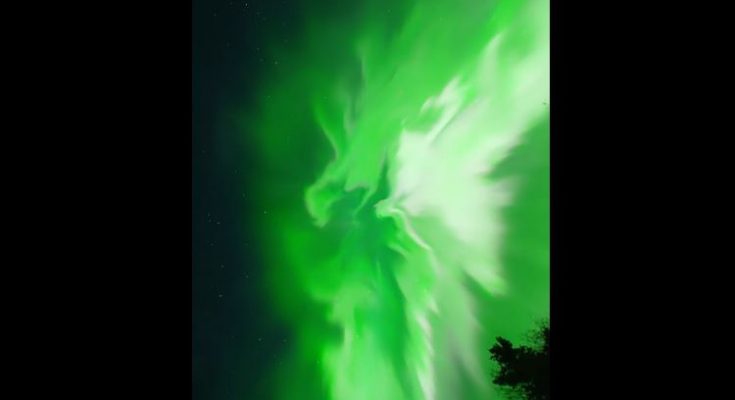United States/IBNS: A powerful geomagnetic storm, caused by a significant gap in the sun’s corona, severely impacted the Earth’s magnetic field, causing a stunning display of the Northern Lights in the United States.
The event was observed by millions of people, who were mesmerised by seeing the aurora borealis dancing in green brilliance. Many states in the United States reported the aurora borealis.
The videos of the rare natural event in the US flooded the timelines of millions of social media users. Several accounts shared the visual shots by themselves.
According to experts, the positioning of oxygen and nitrogen in the atmosphere is responsible for the colors that appear in the sky. Green, red, and blue hues are primarily generated by nitrogen, while oxygen is the main contributor to the colour blue.
What exactly happened? Explains NASA
If you’re ever near the North or South Pole, you may be in for a very special treat. Frequently there are beautiful light shows in the sky. These lights are called auroras. If you’re near the North Pole, it is called an aurora borealis or northern lights. If you’re near the South Pole, it is called an aurora australis or the southern lights.
Auroras are actually caused by the Sun. The Sun sends us more than heat and light; it sends lots of other energy and small particles our way. The protective magnetic field around Earth shields us from most of the energy and particles, and we don’t even notice them.
But the sun doesn’t send the same amount of energy all the time. There is a constant stream of the solar wind, and there are also solar storms. During one kind of solar storm called a coronal mass ejection, the sun burps out a huge bubble of electrified gas that can travel through space at high speeds.
When a solar storm comes toward us, some of the energy and small particles can travel down the magnetic field lines at the north and south poles and into Earth’s atmosphere. There, the particles interact with gases in our atmosphere, resulting in beautiful displays of light in the sky. Oxygen gives off green and red lights. Nitrogen glows blue and purple.





